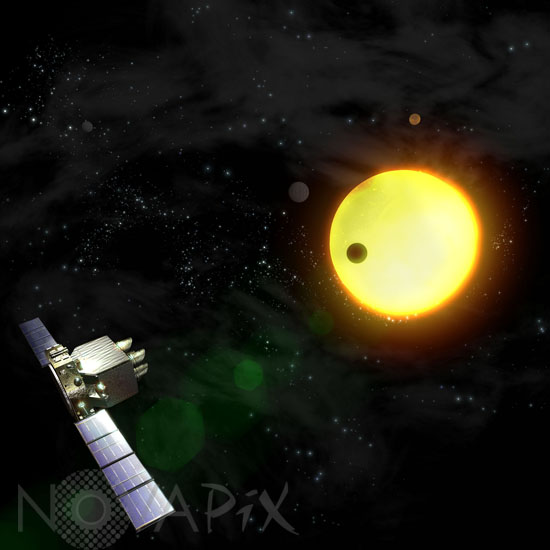Photo Agency - Astronomy - Space - Nature

Artist impression of ESA's Eddington astroseismology observatory
author: ESA/Novapix
reference: e-sou07-95001
Image Size 300 DPI: 18 * 18 cm
Artist impression of ESA's Eddington astroseismology observatory detecting an exoplanet during its transit in front of its parent star. All stars vary a little in brightness, because they vibrate like ringing bells. The speed of this oscillation is determined by factors such as the size, mass, composition and age of the star. The Eddington observatory, named for British astronomer Arthur Stanley Eddington (1882-1944), will be a precision photometer, that is a device that will measure small changes in the brightness of a celestial object. This capability will be used study the brightness variations of stars, allowing astronomers to relate them to their internal condition. This technique is known as astroseismology. Eddington will also detect planets passing across the face of their parent star. When a planet crosses a star, it is called a transit and blocks out a tiny fraction of light. Eddington will detect the drop in light, revealing the existence of the planet. Eddington will be launched in 2008, on a Russian Soyuz-Fregat rocket, from the Guiana Space Center (CSG), Europe's space port, in Kourou, French Guiana. It will travel beyond the Moon to the second Lagrangian stability point of the Sun-Earth system (L2), some 1.5 million km beyond Earth orbit, where it will begin its five-year mission in a Lissajous-type, eclipse free orbit.
Contact : Stéphane Aubin +33-(0)9-51-26-53-76
© Novapix - All rights reserved


